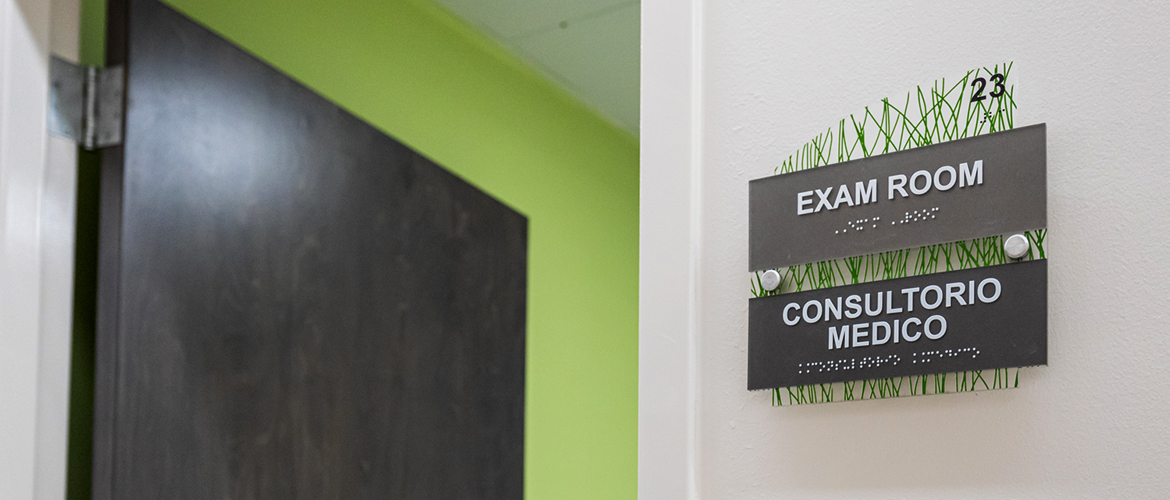One in five Texans don’t know where to go if they’re sick or need health advice. Many who do have a regular place for care say it’s hard to get there.
This reality exposes a big gap in the health care system. Having a convenient medical home can be the key to getting comprehensive and holistic care.
“Primary care takes the lead of the health care of a patient,” says Dr. Adriana Higuera, a family medicine physician. “We play a very important role in prevention and coordination of patient health.”
For the past four years, Higuera has practiced at medical centers operated by Sanitas for Florida Blue members. She recently moved to Houston to help address the primary care need for members of Health Care Service Corporation's (HCSC's) Texas plan members as Sanitas’ regional medical director.
Sanitas operates nearly 30 integrated medical centers in the United States serving more than 200,000 patients. They specialize in an approach to primary care that looks at patients holistically with a comprehensive team of medical and other health care professionals to coordinate care.
“It offers the opportunity to practice medicine the way it should be,” Higuera says of this approach. “It makes our job more efficient, so we can really concentrate on providing good quality of care for our patients.”
That approach will be beneficial for Texas, where primary care doctors can be hard to find. In 2017, it took an average of 12 days for someone in Dallas to get an appointment with a primary care physician. In Houston, the average wait was 21 days.
And those wait times are projected to get longer because of a shortage of primary care physicians throughout the state. So, people turn to more expensive options, like urgent care clinics and emergency rooms. Or, worse, they don’t seek help at all.
“It’s important for us as a payer to look at all aspects of the health care system,” says Dr. Esteban Lopez, chief medical officer of clinical strategy and innovation for HCSC. “If there are gaps in some of those aspects, there may be an opportunity for us to fill those.”
Through the collaboration with HCSC's Texas plan, Sanitas will open 10 medical centers in Harris and Dallas counties — where HCSC's member population is growing while the number of available primary care doctors is shrinking.
“The ability to have these clinics, especially in communities where there may be a physician shortage, allows our members to have access to some of the best care possible,” Lopez says.
More than care
Every center will be open seven days a week with extended hours, making it easier for people to make an appointment without missing work. Larger centers will feature in-house labs and have X-ray and ultrasound capabilities — meaning patients only need to go one place for routine care.
The centers will reflect the culture and diversity of Dallas, where more than 1 million people speak Spanish, and Houston, where more than 1.5 million are Spanish speakers. Bilingual doctors and staff will provide all clinical services.
The Texas plan's customer service representatives will be on site to coordinate non-clinical aspects of care and answer questions in English and Spanish about enrollment, Medicare and other questions related to health insurance.
“Sanitas by definition is a clinic that prides itself on being culturally competent to the patients they’re serving in the community,” Lopez says. “Patients will find it to be a welcoming place where they can speak to the doctor in a language that they prefer and the doctor will understand their cultural nuances.”
Another big gap in the health care system is that doctors and hospitals usually get paid for each service they provide. They’re generally not rewarded for making sure patients are connected with the care and resources they need.
“These providers will be reimbursed on delivering extra value to you,” says Dr. Dan McCoy, president of HCSC's Texas plan. “Better customer service, managing your overall health costs, making sure you have preventative health care services. The idea being it’s not how many patients you can see in a day, it’s how much better value they can deliver you for your health care dollar.”
The value-based collaboration with Sanitas reinforces a shared commitment to a coordinated, integrated approach to care.
“When the health of a patient is fragmented, it’s not the best care for the patient and could be counter-productive,” Higuera says.
The Sanitas centers will have patient care coordinators who connect the dots for patients who do need more advanced care. They establish two-way communication with specialty physicians and hospitals and work with patients to establish appointments so their experience getting care is smoother.
Doctors will start seeing Texas plan members at the Sanitas locations Jan. 1, 2020. Until then, community members are welcome to stop by the new locations and participate in community events.
Higuera, who lived in Texas, before her time in Florida, says she’s looking forward to bringing the Sanitas approach to primary care to the state. “It’s something people were needing.”

